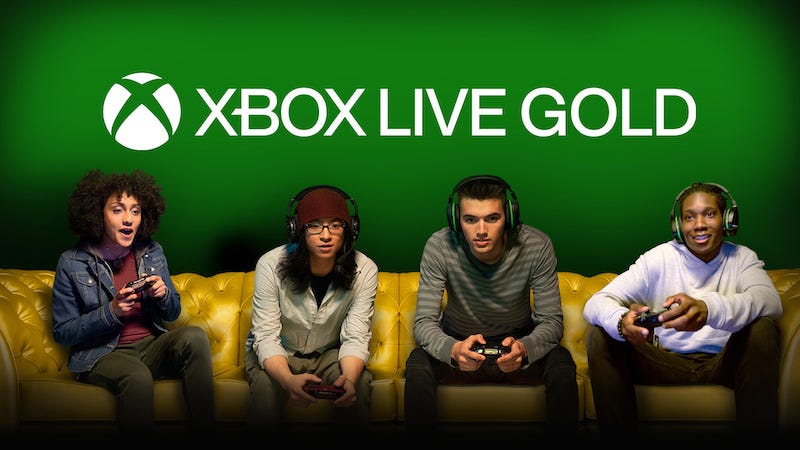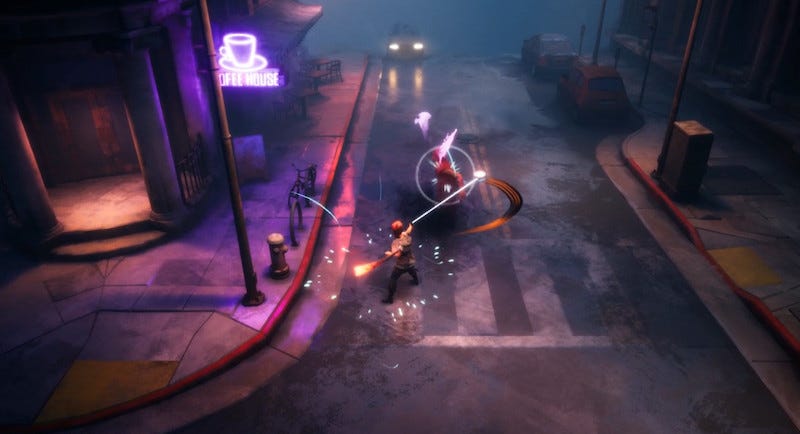Xbox's Gold pricing flipflop & what it means for Game Pass
Publikováno: 25.1.2021
The turbocharge button has been backed away from.
[The GameDiscoverCo game discovery newsletter is written by ‘how people find your game’ expert & GameDiscoverCo founder Simon Carless, and is a regular look at how people discover and buy video games in the 2020s.]
Welcome to a brand new week in game discovery land! They just keep coming relentlessly, don’t they? (Weeks, I mean - not, like, ghosts or monsters or zombies, or clowns. Especially not clowns.)
And in this case, we’ve had an interesting occurrence since the last newsletter. It speaks to both sentiment & trajectory on ‘the road to a Netflix-like model for games’. So let’s look at it:
Xbox Live Gold’s pricing change of heart & ramifications
So, I’m guessing that most of you probably saw this story. But summing up briefly if you didn’t:
On Friday morning, Microsoft announced that it would be sharply increasing the price of its Xbox Live Gold subscription. Gold allows you to play multiplayer games on Xbox, and also gives you access to select free games every month. It used to be $60 if you signed up for a year, but was becoming $60 for 6 months - effectively doubling.
The reaction was not good, with Ryan McCaffrey at IGN writing an opinion piece which I think reflects the sentiment: “A sudden price change in the middle of a pandemic is an unexpected move from a company that’s built a track record of doing right by gamers.” And The Verge commented: “Sony still offers 12 months of PlayStation Plus for $60, and it’s not clear what Microsoft will offer to justify the sudden price jump.”
All of 14 hours later (good turnaround time!), Microsoft updated its original blog post to say it would not be changing the prices: “Connecting and playing with friends is a vital part of gaming and we failed to meet the expectations of players who count on it every day.” And some time in ‘the coming months’, “for free-to-play games, you will no longer need an Xbox Live Gold membership to play those games on Xbox.”
So what happened here? Well, when I first saw the news, I commented on the GameDiscoverCo Twitter account: “Doubling the Gold price? Xbox trying hard to flush players off Xbox Live Gold, and onto Xbox Game Pass (ideally Ultimate!)” I thought it was harsh, but not incredibly harsh - because I’d actually slightly misunderstood the pricing.
As the IGN editorial explains: “The top-tier Game Pass service runs $15 per month or $180 per year compared to $10 per month or $120 per year for the standard Game Pass… The difference, though, is that Ultimate not only adds Game Pass on PC, but it also includes Xbox Live Gold, whereas regular Game Pass does not.”
So if you still want to play multiplayer games, and want ‘vanilla’ Xbox Game Pass, the originally announced change would have - in Microsoft’s ideal scenario - just made you do the math, and realize Xbox Game Pass Ultimate ($14.99 a month) is a better deal for you than splitting Gold and Game Pass subscriptions ($19.99 a month).
(Many people have a separate yearly renewable Xbox Live Gold subscription, and a monthly Xbox Game Pass one, so it’s a little hidden to them? It turns out I should have been on Game Pass Ultimate all along, even with the reverted pricing, and wasn’t paying attention. Hey, now I can play Jedi: Fallen Order because of the EA Play bundling!)
But here’s some of the possibly unanticipated things that led to Microsoft’s change of heart on the matter:
The concept of ‘paying for multiplayer access’ is archaic, and is still the main concept Xbox Live Gold has been defined by. (There’s been some attempts to bulk up ‘Games With Gold’, the free games you get with your subscription. But do too much of that, and the Gold messaging starts clashing with the Game Pass messaging - it’s messy.) Either way, this change accidentally put more focus on the ‘poorer value’ half of the Xbox subscription ecosystem.
For anyone who just has Xbox Live Gold right now: ‘playing $120 a year for access to F2P multiplayer games on your Xbox during a pandemic, double the amount Sony charges you’ is a bad look when yelled out by people on the Internet. Even if most people playing Xbox don’t solely play F2P games when playing multiplayer. Microsoft’s retort is probably ‘yes, but for $15 a month you get all this stuff’. Which is true, but doesn’t win Internet arguments. (Also, that’s a tripling of cost for the Xbox Live Gold only crowd.)
There are now also some downsides to Microsoft taking its games to PC & cloud more aggressively. Specifically - people are questioning, if Xbox Live Gold is ‘paying for the servers’, why PC players of Halo don’t have to pay for the multiplayer servers separately. The long-term answer has to be ‘get Game Pass and you get full access to everything everywhere’. But short-term, Xbox Live Gold is out of messaging step. So increasing price on that more radically is seen as adversarial.
Concluding, it’s not like senior management at Xbox weren’t aware of this potential change. I’m sure they had multiple meetings about it. And if you back this all out from a P&L/spreadsheet point of view, the change Microsoft made on Friday made sense. And the company also wants ongoing spending (if not acquisitions!) to be as breakeven as possible, I suspect, so there’s a limit to how ‘loss leader’-y they can go.
So in the further future, I’m guessing Xbox Live Gold isn’t going to exist. And at the point it doesn’t, Microsoft wants as many people paying $15 a month for its successor (as part of Game Pass’ multiple value tiers) as possible. This consolidation will speed the route to game subscriptions as a norm - and so has a big effect on game discovery, long-term.
But in hindsight, I bet the company wishes it had put Xbox Live Gold up by 20% and then pointed out much more strongly: ‘look, you get Xbox Live Gold with Game Pass Ultimate, that’s great - so think about that!’. This fact was even a bit buried - in my view - in the original announce. That more incremental approach would have spared some of the backlash.
Anyhow, kudos to Xbox for making a swift decision to reverse. The funny thing about the Internet is that it has a 24-hour memory, and reversing this planned change straight away has negated that. (But made it difficult for them to raise the Xbox Live Gold price in the medium-term. So may slow their transition away from Gold significantly.) We’ll keep an eye on it for you…
Steam prologues - the debate continues
Lots of reactions to the most recent GameDiscoverCo newsletter on Steam prologues. In it, I questioned their value as a major booster, while also suggesting it’s almost impossible to tell what is going on with them, since we can’t A/B test… reality.
Here’s some notable updates, then:
The folks at Afterburner Studios who made Dreamscaper (above), whose Prologue has done super-well (1,983 reviews) and whose main game is doing well (700 reviews so far) wanted to point out a couple of things. Firstly, although it says ‘4-6 hours of unlockable content’ in the game description, it’s actually just one level which is about 15 minutes long and replayable. And second, the game is still in Early Access - more upside there! So we might consider them a success, even if the Prologue review numbers outpace the main game.
It was pointed out you can get a lot of honest feedback from ‘regular Steam gamers’ via Prologue reviews and comments. These may be more reflective of what the average player thinks than any limited-time Alphas you do. Those are more likely to be hardcore fan-centric, especially if advertised within your existing community.
On the other hand, the Prologue - and demos - are free, so people evaluate it as a free game. That’s sometimes more generous a lens compared to the final product, if you look at review scores for games that launched vs. their Prologues. And we’ve seen indications that some countries (China?) that don’t end up buying the final game can grab free Prologues in droves. Perhaps due to lack of Chinese-language free games on Steam in general?
Finally, getting early streamer coverage of the Prologue is great. But I did get feedback that some of these ‘variety’ streamers on YouTube or Twitch will sometimes only cover medium-profile games once. So did you just shift your one piece of video coverage from launch to pre-launch, and is that good? (I actually think it’s probably fine in net, but worth considering.)
And here’s a couple of Prologues doing very well who chatted to me after the newsletter went out - Voolgi/HypeTrain’s SuchArt: Creative Space is interesting because it’s a freeform art creation tool demo for a game which is about being an artist - and has great engagement already. And Ground Shatter/Mode 7’s Fights In Tight Spaces Prologue is a ‘first mission only’ Prologue which has got really good buzz at this point.
Not that this discussion will ever be concluded, I still think the discussion over both demos and Prologues is chicken and egg-like. Ultimately, they may just show you how popular your game is going to be, just early? (Unless you have a shallower game that appeals to the casual crowd, at which point your Prologue success may over-represent your final sales.)
Prologues and demos can absolutely help with buzz somewhat, if done right. Overall, I still think that version of ‘right’ is ‘either don’t release a wider demo/Prologue, or release a wide demo for a Steam Festival and/or for a limited time only’. But your mileage, as they say, may vary.
[We’re GameDiscoverCo, a new agency based around one simple issue: how do players find, buy and enjoy your premium PC or console game? You can subscribe to GameDiscoverCo Plus to get access to exclusive newsletters, interactive daily rankings of every unreleased Steam game, and lots more besides.]

